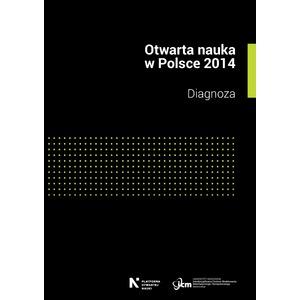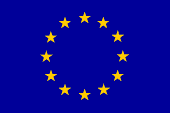
About the report.
The report “Open Science in Poland 2014: a Diagnosis” describes the current state of openness
in the Polish science sector. The intent of this report is to deliver a complex analysis of open
science: open access to scientific publications, with regard to institutional context and
infrastructure, open data and other phenomena, such as open notebook science, open peerreview,
citizen science initiatives or scientific blogs.
In chapter one, we present the institutional context of open science in Poland. In chapter two,
we analyse selected legal aspects of open science in Poland. In chapter three, we present the
current e-infrastructure of open access. In chapter four, we summarize the analysis of nearly
2000 Polish scientific journals and its findings, as well as a survey conducted for the purpose
of the present report, while in chapter five we move on to the survey involving over 3100 Polish
scientists. Chapter six is devoted to forms of open science other than open access and open
data.
Key findings.
In Poland, the number of scholarly publications that are accessible for free on the internet is
dynamically growing. According to the research conducted by authors, 49% (947 titles) of all
Polish scholarly journals provide access to their current issue on the internet with no fee.
59% of the researchers who participated in the survey made at least one of their publication
open. 12% of them do it regularly. 74% of the respondents agree with the statement that results
of publicly financed research should be open.
Conclusions.
The most important element of open science in Poland in 2014 is the open access to scientific
content, while other forms play a limited role. Currently, Open Access is implemented mainly by
the publishers of scientific journals, centers providing infrastructure, scientists and few
institutions, that have established their own institutional repositories. In the scientific
community, the popularity of open access to scientific publications is constantly growing. The
role played by other, related phenomena, like scientific blogging, open notebook science or
open peer review, is currently very limited.
Open models had been first implemented locally, as a “grassroot” movement, but with time, a
need arose for a more systematic approach, especially concerning strategies and policies of
institutions responsible for research and funding, both state-owned and international. In Poland
such policies and strategies are yet to be developed, and the basic condition to be fulfilled is
establishing a diagnosis of the current state of openness in the Polish science sector.
Raport “Otwarta nauka w Polsce 2014. Diagnoza” opisuje stan otwartości w polskiej nauce. Autorzy raportu prezentują kontekst instytucjonalny otwartej nauki, analizują jej aspekty prawne i społeczne, przedstawiają istniejącą infrastrukturę oraz omawiają wyniki przeprowadzonych na potrzeby raportu badań polskich czasopism i naukowców. Raport pod redakcją Jakuba Szprota został opracowany w ramach działań Platformy Otwartej Nauki przez zespół autorów z Interdyscyplinarnego Centrum Modelowania Matematycznego i Komputerowego Uniwersytetu Warszawskiego.


 Unless otherwise stated, all materials created by the FOSTER consortium are licensed under a CREATIVE COMMONS
ATTRIBUTION 4.0 INTERNATIONAL LICENSE.
Unless otherwise stated, all materials created by the FOSTER consortium are licensed under a CREATIVE COMMONS
ATTRIBUTION 4.0 INTERNATIONAL LICENSE.
 This project has received funding from the European Union’s Seventh Framework Programme for research,
technological development and demonstration under grant agreement no 612425.
This project has received funding from the European Union’s Seventh Framework Programme for research,
technological development and demonstration under grant agreement no 612425.